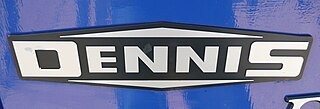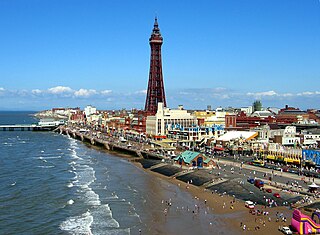
Alexander Dennis is a British bus building company based in Scotland. The largest bus and coach manufacturer in the United Kingdom, Alexander Dennis has manufacturing plants and partnerships in Canada, China, Europe, Hong Kong, Malaysia, New Zealand, South Africa and the United States.

The Dennis Dart is a rear-engined single-decker midibus chassis that was introduced by Dennis Specialist Vehicles of Guildford, England in 1989, replacing the Dennis Domino. Initially built as a high-floor design, In 1996 the low-floor second generation Dennis Dart SLF was launched. In 2001, production of the Dart SLF passed to TransBus International, during which time it was sold as the TransBus Dart SLF; Alexander Dennis took over production in 2004, renaming the product as the Alexander Dennis Dart SLF.

Duple Metsec was a bus bodywork builder based in West Midlands of England in the United Kingdom. It usually supplied body kits for bus assembly overseas.

The Volvo B10M is a mid-engined city bus and coach chassis manufactured by the Swedish automaker Volvo between 1978 and 2003. It succeeded the B58 and was equipped with the same 9.6-litre horizontally mounted Volvo diesel engine mounted under the floor behind the front axle. An articulated version under the model name Volvo B10MA was also offered, as was a semi-integral version known as the C10M, with the engine in the middle of the chassis.

The Bedford OB was a bus chassis manufactured by Bedford from 1939.

Barton Transport was a bus company that operated in Nottinghamshire from 1908 until 1989.
The Dennis Dorchester was a mid-engined heavy-duty single deck coach or bus chassis manufactured by Dennis in small numbers between 1983 and 1988.

The Duple Dominant was a design of a coach bodywork built by Duple between 1972 and 1987. It introduced an all-steel structure and replaced the wooden-framed Duple Vega, Viceroy and Vista models.

The Bedford VAL is a type of coach chassis that was built by Bedford in the United Kingdom from the mid-1960s to the early 1970s. It was unusual at the time for its multi-axle design, in a "chinese six" wheelplan, i.e. with two front steering axles.

Bus manufacturing, a sector of the automotive industry, manufactures buses and coaches.

The Leyland Tiger Cub was a lightweight underfloor-engined chassis manufactured by Leyland between 1952 and 1970.

The Daimler Freeline is an underfloor-engined bus chassis built by Daimler between 1951 and 1964. It was a very poor seller in the UK market for an underfloor-engined bus and coach chassis, but became a substantial export success.
H. V. Burlingham was a British coachbuilding business based in Blackpool, Lancashire from 1928 until 1960 when they were taken over by London-based rivals Duple Motor Bodies. Duple initially renamed Burlingham as Duple (Northern) but in 1969 they closed their Hendon factory and concentrated production in Blackpool. Duple coach bodies were built in the former Burlingham premises until Duple itself was liquidated in 1989.
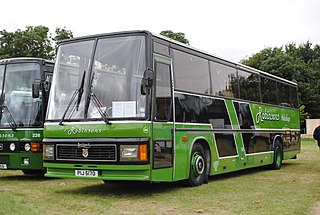
The Duple Caribbean was design of a coach bodywork built by Duple between 1983 and 1986. It replaced the high-floor Goldliner variant of the long-running Duple Dominant range as Duple's premium coach body of the mid 1980s.
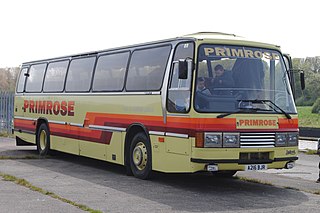
The Duple Laser was a design of a coach bodywork built by Duple between 1983 and 1986. It replaced the long-running Duple Dominant body as Duple's standard medium-height coach of the mid 1980s.
The Duple Calypso was a design of semi-integral coach built by Duple between 1983 and 1984 using running gear from the Bova Europa.
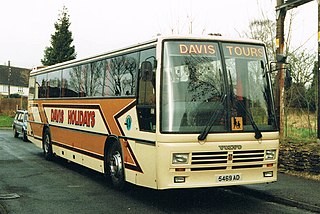
The Duple 300 Series were a range of bus and coach bodywork built by Duple between 1985 and 1989. The range comprised the 3.0m high Duple 300 service bus, the 3.2m high Duple 320 coach, and the taller 3.4m high Duple 340 coach. The 320 and 340 coaches were announced at the Bus and Coach Show at Earls Court in September 1985 as replacements for the previous Laser and Caribbean. Deliveries of these models commenced in 1986, whilst the 300 bus was launched in 1987 as a replacement for the Dominant Bus. After Duple closed down the designs were sold to Plaxton and a small number of additional 320 bodies were built as the Plaxton 321.







